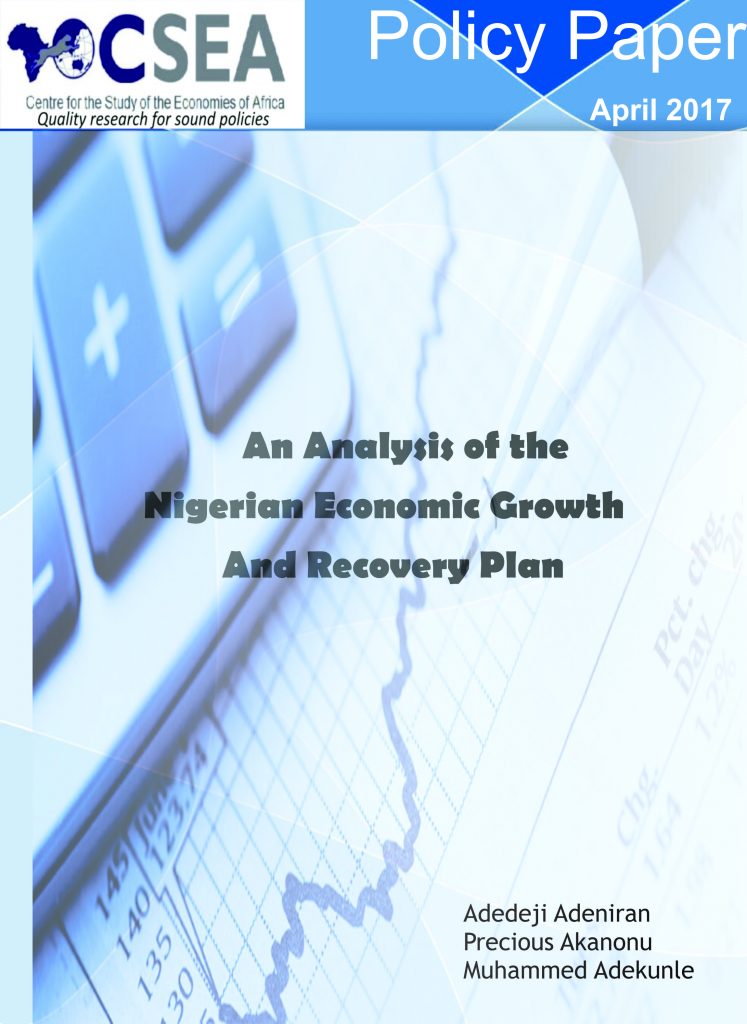Policy Brief & Alerts

August 22, 2017
An Analysis Of The Nigerian Economic Growth And Recovery Plan
This Paper examines the response of the Nigerian government to the ongoing recession in
the domestic economy, particularly in the context of the recently released Economic
Recovery and Growth Plan (ERGP) for 2017-2020. It also provides an analysis of
key questions regarding the suitability, achievability, and prospect of the
ERGP. The second section of the brief runs through the state of the Nigerian
economy with a focus on the cause and drivers of the ongoing recession. The
third section reviews the objectives, implementation strategy, and expected
outcomes of the ERGP over the medium-term. The fourth section weighs on the
potentials of the ERGP by analyzing some pertinent questions: Is the proposed
recovery plan and policies well-targeted to address prevailing economic crises
in Nigerian economy?
